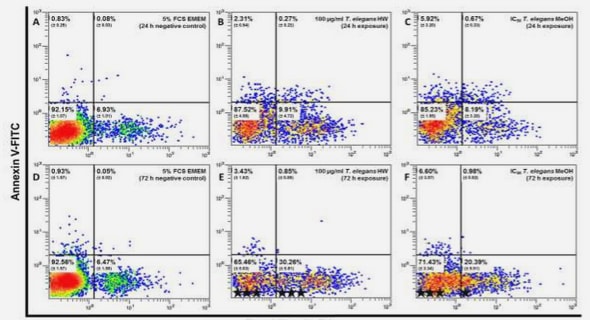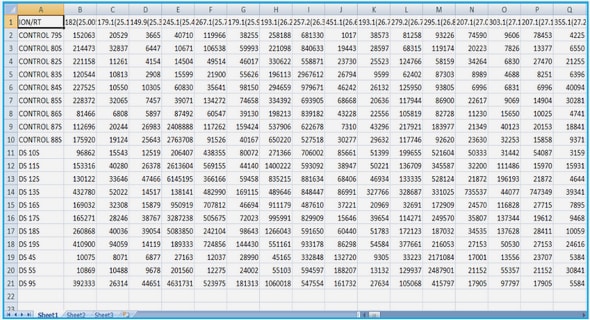Get Complete Project Material File(s) Now! »
Method for Testing PSHM against Observations
The method developed in the present study is building from several previous works. As introduced by Ward (1995), the length of observation time windows can be compensated by considering several sites and sampling in space. Thus, the consistency of a PSH model with the observations is evaluated at several locations at once. Following Albarello & D’Amico (2008), sites need to be distant enough from each other. Acceleration occurrences must be independent from one site to the other, and the ground-motion occurrences at the different sites are assumed to belong to the same unique stochastic process. The acceleration thresholds with a given probability p of exceedance in a given time window are inferred from the hazard curves at all sites.
Albarello & D’Amico (2008) considered only sites having the same lifetime (30 years, 68 sites). For each site, either the threshold has been exceeded during the observation time window (success with a probability p according to the PSH model), or there was no exceedance (probability 1-p). The situation is comparable to a sequence of independent yes/no experiments. Therefore the binomial distribution gives the expected number of sites with exceedances where P(n) is the probability to observe n sites with exceedance out of the NS sites, p is the probability of an experiment resulting in a success. If the observed number corresponds to a very low or very high probability (compared to a chosen confidence interval), the test indicates that the model over- or under-predicts the observations.
Stirling & Gerstenberger (2010) proposed another approach, adapted to the New Zealand accelerometric network where station lifetime varies a lot from one station to the other (from 6 to 44 years, 24 stations in 2009). The test aims at comparing the predicted and observed number of exceedances, while Albarello & D’Amico (2008) compare the number of sites with exceedance. At one site, for a given acceleration threshold g0, a PSH model provides the mean annual rate of exceedance λi. The mean expected number of exceedances is obtained by multiplying the rate λi by the duration of the observation time window ti. Again, accelerations at a site are assumed to occur according to a stationary Poisson process.
The Poisson distribution, fully defined by its mean, provides the probability of observing a given number n of accelerations above the threshold g0 : P(n) λ t i n e−λiti where ti is the time window at the site i with annual rate of exceedance λi given by the PSH model. The authors defined the following simple statistical test: if the observed number falls within the tails of the distribution, defined by the percentiles 2.5 and 97.5%, the observations are considered consistent with the model (model is not “rejected”). Stirling & Gerstenberger (2010) first evaluated PSH models at individual sites and then gathering all sites. They wrote p. 1408 “The summed analysis is conducted because the site-specific comparisons often involve very few events and would yield meaningless results in many cases”. The sites are far enough apart so that they can be considered independent in terms of ground-motion exceedances. As the sum of independent Poisson processes constitutes a Poisson process, the total number of exceedances observed over all sites is compared to the distribution defined by the following mean:
Ntotal∑λiti (3).
Stirling & Gerstenberger (2010) obtained different results when testing each site individually and when considering all sites at once (Equation 3). When testing each site individually, the model is not rejected at 22 out of 24 sites, i.e., the observed number of exceedances is within the confidence interval of the discrete Poisson distribution. However, when testing the whole network at once, i.e. comparing the total observed and predicted numbers of exceedances, the PSH model is rejected with 95% confidence, as it is predicting fewer exceedances than have been observed in the historical period. This suggests that testing the PSH model against the total number of exceedances is more meaningful than individual tests.
The French accelerometric network has been built progressively since 1995, and lifetime of stations varies from 2.8 to 16.6 years. The test must be able to handle varying lifetimes to take advantage of the full database. A PSH calculation yields the probability that an acceleration level will be exceeded “at least once” over a time window. We prefer to focus on the number of sites with exceedance, rather than the exact number of exceedances, although both studies are possible. In total, 62 sites in France are included in the analysis. The Monte Carlo method is used to sample the site-specific Poisson distributions (Equation 2), characterized by their means (λiti), and generate numbers of acceleration exceedances for all sites (corresponding to time windows ti).
One run yields one set of 62 numbers of exceedance. Sampling the Poisson distributions many times, many sets of numbers of exceedances are generated. All are compatible with the PSH model. For each run, we count the total number of sites with exceedance. Finally, 10.000 runs provide 10.000 total numbers of sites with at least one exceedance (out of 62), and a probability distribution can be built. This distribution describes the expected number of sites with exceedance, for a virtual network having the same number of stations as the accelerometric network, and the same lifetimes. This probability distribution has a shape very close to a binomial distribution. Note that in the case of Albarello & D’Amico (2008), where all sites have the same lifetime, this distribution is binomial and can be obtained analytically. In Figure 2.1, as an example, the test is led considering 5 RAP stations and a given acceleration threshold.
Building the Accelerometric Dataset
In France, the first stations of the accelerometric network were installed in 1995 (French Accelerometric Network, RAP, Péquegnat et al. 2008). Since then, the number of stations has increased, reaching at present a total of 142 sites in Metropolitan France. Out of these 142 sites, 69 are identified as ‘rock sites’ (shear-wave velocity at 30 m depth larger than 760 m/s; see Régnier et al. (2010) and the information given on the RAP website). Most of these stations are located in the Pyrenees (19), Alps (33) and Lower Rhine Graben (5), regions with the highest seismic hazard in metropolitan France. The RAP stations are either in triggering mode or continuous recording stations. They consist of one three-component broadband accelerometric sensor (kinemetric episensors, except for some of the oldest stations having Guralp CMG5). They are connected to a 24-bit three-component digitizer sampling at 125 Hz. The useful frequency band is 0-50 Hz. Only offset correction is applied to the data without any additional filtering.
Scheme detailing the Monte Carlo process followed for generating a) the probability distribution for the number of exceedances (NEXC) considering all sites, b) the probability distribution for the number of sites with at least one exceedance (NSITES). The acceleration threshold is fixed (25 cm/s2). Five accelerometric sites are considered in this example, with different observation windows, resulting in a total observation time window of 54.99 years. The probability distributions provide numbers of occurrences over 54.99 years. tOBS: observation time length of the stations, λ25cm/s2: predicted annual rate of exceeding 25cm/s2, Nmean: Predicted number of exceedances for a ground motion higher than or equal to 25cm/s2 during tOBS.
The database extends over 16 years, from June 1995 to July 2011, and contains 40431 recordings (horizontal two-components). To limit the size of the database, we selected only signals with Peak Ground Amplitude (PGA) higher than 1 cm/s2, whatever the magnitude of the earthquake, reducing the total number of records to 2207. Stations in buildings and boreholes are not used. Note that a few events recorded only on one horizontal component and on the vertical component are kept. After a careful check of the database, we identified several issues: bad association of records with responsible earthquake, shift of signal baselines, truncation of records, and low signal-to-noise ratio. For all signals, we checked the association of a record with an earthquake by comparing the P-wave arrival time observed on the signal with the arrival time estimated from the earthquake location and origin time given in the RAP database. If the observed and estimated arrival times differed by more than 10 seconds, we looked for an explanation. Either the clock of the station was not correct, or the record had not been associated with the right earthquake. For ten records, the associated earthquake was not correct and the appropriate one was extracted from the Renass earthquake catalog (See “Data and Resources” section). For 54 signals, the shift was likely due to a clock problem of the station. Indeed, in most cases the time shift was a multiple of 60 seconds, as often observed for clock problems.
Other issues encountered are shifts in the signal baselines and truncation of signals. Forty-two records contain a sudden shift in the baseline, which we corrected. Due to completeness issue, truncated records must be kept in the database. Twenty-four records were clearly truncated after the occurrence of the peak amplitude, and thus only the PGA could be estimated. Records that were truncated in the middle of the signal were kept and the amplitude considered as a minimum threshold for PGA (38 signals).
The final dataset used for testing PSH models contains 701 two-component records recorded at 47 rock sites, corresponding to 551 earthquakes (Figure 2.2). At the other 15 rock stations, no ground motion higher than 1 cm/s2 occurred during their lifetime, these stations are nonetheless included in the analysis. For the sake of independency of sites, stations located closer than 10 km to another rock station are not considered further (7 stations). In this case, we kept the station with the largest expected number of exceedances during the station lifetime.
The time windows of observations vary from one station to the other; 28 stations have been recording between 5 to 10 years, and 29 of them have been recording between 10 to (a) Colored triangles: the 47 rock stations which have experienced at least one PGA ≥1 cm/s2 during their lifetime, white triangles: 15 remaining rock stations. Color scale: maximum acceleration recorded at each station. Circles: responsible earthquakes. Blue rectangle: region considered in the SIGMA2012 study. (b) Distribution of all PGA amplitudes against the magnitude of the corresponding earthquake (ML_Renass). (c) Distribution of epicentral distances of these records against the magnitude of the corresponding earthquake.
16 years. Three rock stations have recorded a PGA higher than 100 cm/s2, SAOF in the South-East Alps and PYBB/PYAD in the Pyrenees, whereas half of the stations recorded at maximum a PGA lower than 10 cm/s2 (Figure 2.2). Magnitudes responsible for producing a PGA higher than or equal to 1 cm/s2 (on at least one component of the accelerometric stations) vary between 1 and 5.7 (Renass local magnitude, ML_Renass). However, most of the data have been produced by magnitudes between 2 and 3.5 (70% of the total database, ML_Renass) at stations located between 5 and 70 km from the epicenters (89%).
For our analysis, it is of primary importance to use a complete database, or at least to identify gaps in the recording and estimate the fraction of missing records in our database. We identified potential gaps in a station recording by analyzing the inter-event times (times between successive earthquakes) of the acceleration sequence, based on the raw RAP database (no threshold on the acceleration). Mean inter-event times were calculated, and inter-event times larger than 10 times the mean were considered as gaps in the recording (station not functioning) (Figure 2.S5 in Electronic Supplement).
The station lifetime was shortened accordingly (Table 2.S1 in Electronic Supplement). Another test can be applied to check the completeness of our database, using an earthquake catalog and a GPME. This test if however limited by the inherent variability of ground motions. Using the Cauzzi & Faccioli (2008) equation, which fits well the French dataset (Beauval et al. 2012), we looked for earthquakes in the Renass earthquake catalog that should have produced a median acceleration larger than 10 cm/s2 at the stations considered. Fifty-eight couples event-station were identified. Eight records were missing (2 at OGSI, 5 at PYCA, 1 at PYAT). Five of them occurred within identified gaps (Table 2.1). For the three remaining earthquakes, we did not find an explanation for the missing record (Table 2.2). The station seemed to be working correctly at the time of the earthquake, since it detected a few events in the preceding and following days. Even if the problem is mostly localized on one station (PYCA), this suggests that the fraction of missing records (after correcting from identified gaps in the monitoring) is around 5% (3/58).
Table of contents :
Chapter 1: Introduction
Chapter 2: Testing Probabilistic Seismic Hazard Estimates Against Observations: Application In France Using Accelerometric Data
Chapter 3: Evaluating the SHARE hazard model in the Turkish area using accelerometric data
Chapter 4: Evaluating the probabilistic seismic hazard models using macroseismic intensities in France
Conclusion
Bibliography


